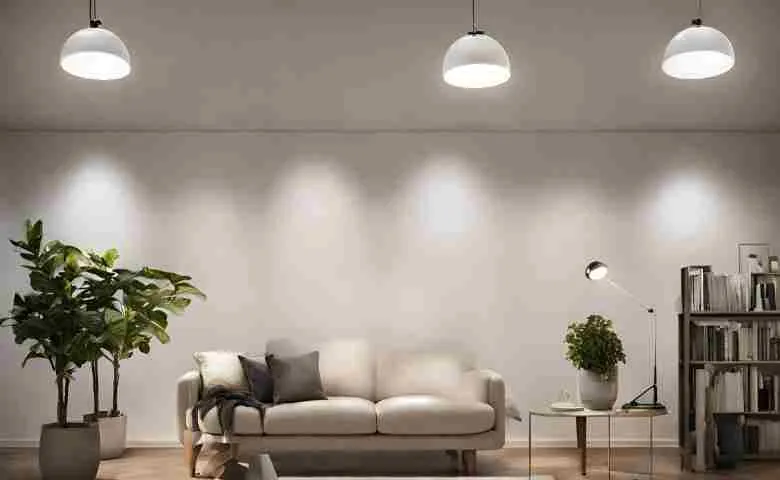Last Updated on January 4, 2024 by Admin
When it comes to lighting solutions, homeowners often face the dilemma of choosing between temporary and permanent options. While temporary lights might seem a budget-friendly quick fix, they tend to lack their permanent counterparts’ durability, efficiency, and aesthetic appeal.
This article delves into why investing in permanent lighting is a wise and beneficial decision, examining its long-term cost-effectiveness, energy efficiency, and potential to enhance the visual appeal of your home.
Table of Contents
Cost-effectiveness
One of the main reasons why permanent lighting is worth the investment is its cost-effectiveness. Unlike temporary lights that need to be replaced frequently, permanent lighting fixtures are built to last for years, if not decades.
This means you won’t have to constantly spend money on replacements and repairs, saving you significantly in the long run.
Moreover, permanent lighting solutions often have lower maintenance costs than temporary lights. This is because they are designed with high-quality materials and advanced technology, making them more resistant to wear and tear.
They also come with longer warranties, providing added protection and peace of mind.
Energy Efficiency
Aside from being cost-effective, permanent lighting solutions are also energy-efficient. Unlike temporary lights that use traditional incandescent bulbs, permanent lighting fixtures are designed with LED technology, which uses significantly less energy.
This not only reduces your electricity bills but also helps to lessen your carbon footprint and contribute to a greener environment.
Furthermore, permanent lighting gives you more control over the light you need in each room. With features such as dimmers and timers, you can adjust the brightness levels according to your preference and save even more energy.
Aesthetic Appeal
Another significant advantage of permanent lighting is its potential to enhance the visual appeal of your home. Permanent fixtures are designed with various styles, designs, and finishes that can complement any interior decor theme.
This allows you to create a unique and personalized look for your home, adding to its overall aesthetic appeal.
Additionally, permanent lighting fixtures are often integrated into the architecture of your home, providing a seamless and stylish appearance that is impossible with temporary lights.
In fact, well-designed permanent lighting can act as an elegant design element on its own, elevating the style and ambiance of any room in your house.
How to Install Permanent Lighting
Installing permanent lighting involves a series of meticulous steps. Here’s a simple guide to help you through the process:
- Turn off the power – Safety comes first. Ensure you turn off the power from the circuit breaker box before starting the installation process.
- Remove old fixtures – If you’re replacing an existing light, unscrew and carefully remove the old fixture. Disconnect the wires using a voltage tester to confirm the power is off.
- Install mounting plate – Attach the mounting plate to your ceiling junction box. You might need to adjust the screws to ensure it’s flush and level with your ceiling.
- Connect the wires – Follow the manufacturer’s instructions to connect the wires. Typically, you’ll need to connect white to white (neutral), black to black (hot), and green or bare copper to the junction box (ground).
- Attach the fixture – Once the wires are connected and secured with wire nuts, attach your new light fixture to the mounting plate.
- Secure the fixture – Tighten any necessary screws to ensure the fixture is secure and straight.
- Install lightbulbs – Insert the appropriate light bulbs per the fixture’s specifications.
- Turn power back on – Restore power, and test your new light fixture.
Note: Always refer to the manufacturer’s instructions for specific installation guidelines and safety precautions.
How Can Professionals Help?
Professional lighting technicians are often better suited for installing permanent lighting due to their specialized knowledge, expertise, and focus on safety. They are trained to handle the electrical complexities involved in the installation, which, if done incorrectly, can lead to hazardous consequences such as electrical shocks or fire risks.
Professionals understand the nuances of different lighting fixtures and adhere to local building codes and regulations. They have the right tools to get the job done safely and efficiently, thereby reducing the risk of potential damages to your home that can occur due to improper installation.
Moreover, professional installers are insured, which means if anything were to go wrong during the installation process, the liability would be covered by their insurance policy and not fall on the homeowner. You can get more info on this by talking to professionals in your area.
Besides safety, professionals can provide valuable advice on choosing the most suitable lighting solutions that meet your needs, style, and budget. They can suggest strategic placement of lights to optimize light distribution, enhance aesthetics, and improve energy efficiency.
In essence, while DIY may seem like a cost-saving measure initially, the benefits of professional installation in terms of safety, accuracy, and long-term value cannot be understated. It’s a worthwhile investment that brings peace of mind and ensures your lighting is installed correctly, safely, and aesthetically pleasing.
Conclusion
In conclusion, permanent lighting is an essential and worthwhile investment for any homeowner. It provides cost-effectiveness, energy efficiency, aesthetic appeal, and long-term value. While installing it yourself may seem viable, seeking professional help ensures safety, accuracy, and optimal results.
So go ahead and make the switch to permanent lighting – your home (and wallet) will thank you in the long run.
Related Posts:
- Impact of Lightning on Building and Remedial Measures
- The Best Roofing Materials for Every Climate
- How to protect your roof from water damage?
- Your Guide to Civil Engineering Online Courses
- Civil Site Engineer Technical Knowledge Practice Test


